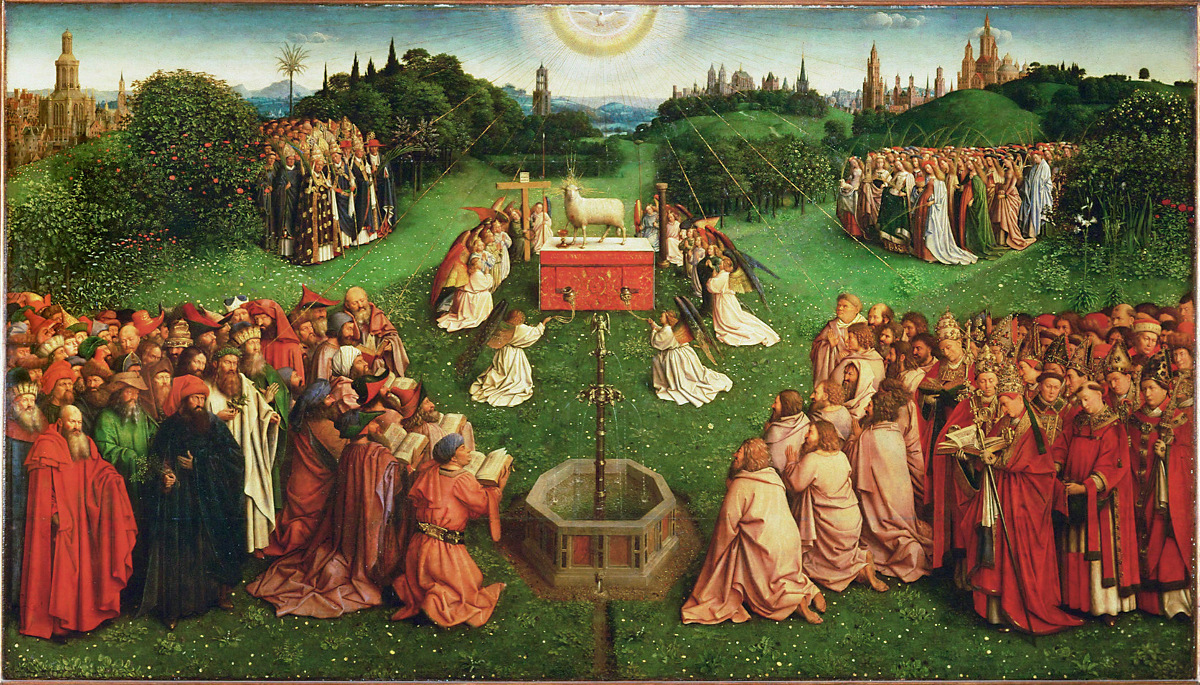The Lamb's Supper: The Bible and the Mass
Lesson Two: Given for You - The Old Testament Story of Sacrifice

Lesson Objectives
- To understand the death of Jesus Christ on the cross as a sacrifice.
- To see the parallels between the Old Testament sacrifices and the sacrifice of Christ on the cross.
- To understand how that sacrifice is re-presented to us in the Mass.
I. Worthy Is the Lamb
A. The Titles of Jesus
Jesus is given many titles in Scripture.
He is called "the Anointed" (see Acts 4:26) and "the Christ" (see Acts 3:20). Frequently he is referred to as "Lord," "Master," "Teacher."
He is called "Lion of Judah" (Revelation 5:5), "High Priest" (see Hebrews 3:1), "Son of God" (see Mark 1:11), and "King of the Jews" (see Mark 15:2; 15:26).
Such titles acknowledge Jesus as God, King, and head of the Church in heaven and on earth.
But in the Bible's final book, he is called - no less than 28 times - the Lamb: "Worthy is the Lamb that was slain to receive power and riches and wisdom and strength, honor and glory and blessing" (Revelation 5:12).
It is a very curious description. In a way, it is the opposite of the other titles used to describe Jesus. While the other titles connote power and majesty, His description as a "Lamb" calls to mind weakness, powerlessness.
But it reflects a basic belief found in the New Testament - a belief that we continue to profess in each Mass.
Every time we celebrate the Eucharist, the priest prays: "Behold, the Lamb of God, who takes away the sins of the world. Happy are those who are called to His supper."
These words combine two verses from Scripture: John the Baptist's description of Jesus (see John 1:29,36), and the angel's words about the heavenly feast in the Bible's last book (see Revelation 19:9).
B. The Lamb of God
Why do we call Him a Lamb?
Because of all the many sacrifices the Israelites offered, one in particular stood out as the most important sacrifice on the calendar: the Passover, which celebrated Israel's deliverance from bondage in Egypt (see Exodus 12).
Central to the celebration of the Passover was the sacrifice of an unblemished lamb, and the eating of its roasted flesh.
As we will see in this lesson, in calling Jesus the Lamb, the New Testament wants to call to mind this Old Testament sacrifice.
The image of Jesus as the Lamb expresses the Christian belief that in His death on the cross, Jesus was offered in sacrifice - as the lamb was sacrificed by the Israelite families before the Exodus.
In professing that Jesus is the lamb of God in our celebration of the Eucharist, we are recalling His sacrificial death on the cross. But more than that, we are, as we will see, "re-presenting" that sacrifice.
Other Lessons
- Lesson One: A Biblical Introduction to the Mass
- 1. To understand basic Catholic beliefs about the relationship between the Bible and the Liturgy.
- To understand the biblical basis for the Mass.
- To understand how in the Mass, the written text of the Bible becomes Living Word.
- Lesson Two: Given for You - The Old Testament Story of Sacrifice
- To understand the biblical background to the Penitential Rite and the Gloria in the Mass.
- To understand how God is worshipped in the Old Testament.
- To understand the biblical notion of sacrifice as it is presented in the Old Testament.
- Lesson Three: One Sacrifice for All Time
- To understand the death of Jesus Christ on the cross as a sacrifice.
- To see the parallels between the Old Testament sacrifices and the sacrifice of Christ on the cross.
- To understand how that sacrifice is re-presented to us in the Mass.
- Lesson Five: Heaven On Earth: The Liturgy of the Eucharist
- To understand the deep biblical foundations for the Liturgy of the Eucharist.
- To see how the Book of Revelation describes the liturgy of heaven.
- To understand how the Mass we celebrate on earth is a participation in the liturgy of heaven.
- Lesson Six: Memory and Presence: Communion as the Coming of Christ
- To understand the deep biblical foundations of Jesus’ command that the Eucharist be celebrated “in memory of Me.”
- To see how Scripture portrays Jesus as the Passover Lamb and how that portrayal is reflected in the Mass.
- To understand the Eucharist as parousia, the “coming” of Christ, and as the “daily bread” we pray for in the Our Father.

